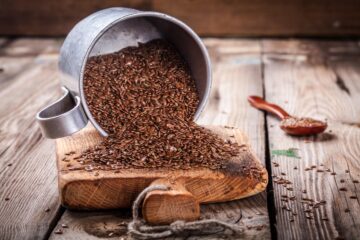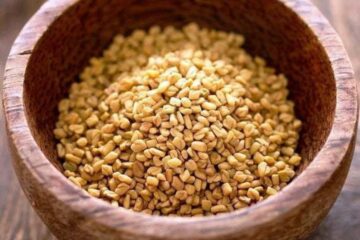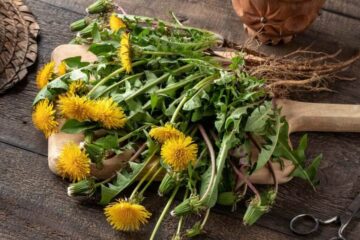Name:
Milk Thistle, also known as Silybum marianum, is the scientific name of this medicinal herb.
Description:
Milk Thistle is a flowering plant that belongs to the Asteraceae family. It is characterized by its prickly stem and leaves with white veins. The leaves are shiny, green, and have spiky edges. It produces purple to red flowers and small, hard, and shiny seeds. The plant usually grows to a height of 1.5 to 3 meters.
Medicinal Uses of Milk Thistle:
- Liver Health: One of the most researched uses of Milk Thistle is its potential impact on liver health. The active ingredient in Milk Thistle, silymarin, has been found to have protective effects on the liver, promoting liver cell regeneration and reducing inflammation. A review of studies published in the Journal of Clinical Gastroenterology in 2019 found that Milk Thistle improved liver function in people with liver diseases (https://journals.lww.com/jcge/Abstract/2019/11000/Safety_and_Efficacy_of_Silymarin_in_the_Treatment.5.aspx). However, more research is needed to determine the extent of these benefits and the optimal dosing.
- Diabetes Management: There is some evidence suggesting that Milk Thistle may help manage type 2 diabetes. A study published in the Phytotherapy Research journal in 2016 found that supplementing with Milk Thistle improved glycemic control and reduced oxidative stress in people with type 2 diabetes (https://onlinelibrary.wiley.com/doi/full/10.1002/ptr.5631). It’s important to note that while these results are promising, Milk Thistle should not replace conventional diabetes treatments.
- Cancer Treatment Support: While not a treatment for cancer itself, Milk Thistle is being studied for its potential to support conventional cancer treatments. According to the National Cancer Institute, preliminary laboratory studies suggest that silymarin (the active component in Milk Thistle) may have anticancer effects and improve the efficacy of chemotherapy drugs (https://www.cancer.gov/about-cancer/treatment/cam/hp/milk-thistle-pdq). However, these potential effects need to be further tested in human clinical trials.
- Skin Health: Research suggests that Milk Thistle may help improve skin health. A study published in the International Journal of Molecular Sciences found that silymarin could potentially protect the skin from ultraviolet (UV) induced oxidative stress and skin aging (https://www.mdpi.com/1422-0067/19/9/2720).
- Heart Health: Milk Thistle could have potential benefits for heart health. The active component of Milk Thistle, silymarin, has been found to have antioxidant properties that could potentially help lower LDL cholesterol levels, also known as “bad” cholesterol. According to a study published in “Phytotherapy Research,” silymarin had a significant effect in reducing LDL cholesterol levels in diabetic patients (https://onlinelibrary.wiley.com/doi/abs/10.1002/ptr.6642). More research is needed in this area to confirm these potential heart health benefits.
- Alleviating Menopause Symptoms: There is some evidence suggesting that Milk Thistle may help alleviate menopause symptoms. A study published in the “Phytotherapy Research” journal found that silymarin, when used in combination with other natural compounds, helped alleviate hot flashes and other menopause-related symptoms (https://onlinelibrary.wiley.com/doi/10.1002/ptr.5051). However, more research is needed to confirm these effects, particularly for Milk Thistle alone.
- Anti-Inflammatory Effects: The anti-inflammatory properties of Milk Thistle have been well documented. Silymarin has been found to inhibit the production of inflammatory cytokines, which could potentially help manage conditions such as inflammatory bowel disease and rheumatoid arthritis. However, the “Journal of the American College of Nutrition” notes that while silymarin does show promise as an anti-inflammatory agent, more research is needed (https://www.tandfonline.com/doi/abs/10.1080/07315724.2002.10719248).
- Neuroprotective Properties: Milk Thistle may have neuroprotective properties. A study published in “Neurochemistry International” found that silymarin helped protect neurons against oxidative stress, suggesting potential benefits for neurodegenerative conditions like Alzheimer’s disease (https://www.sciencedirect.com/science/article/pii/S0197018617305385). Further research is needed to confirm these findings and to understand how they might translate into clinical practice.
Origin and Distribution:
Milk Thistle is native to the Mediterranean regions of Europe, North Africa, and the Middle East. Nowadays, it is found worldwide, including in North and South America and Australia.
Cultivation and Care:
Milk Thistle prefers a full sun exposure and well-drained soil. It is a robust plant that can grow in poor, dry soils. Water it regularly but be careful not to overwater as it is drought-tolerant.
Harvesting and Storage:
The seeds are harvested in late summer when they turn from green to brown. They can be dried and stored in an airtight container.
Uses:
Culinary Uses: The young, spring leaves can be used in salads or cooked as a vegetable. The seeds are often used to make herbal tea.
Medicinal Uses: The seeds are used for various health issues, mainly for problems related to the liver, gallbladder, and bile ducts.
Other Uses: Milk Thistle is sometimes used as a decorative plant due to its attractive spiky leaves and purple flowers.
Safety Information:
Milk Thistle is generally considered safe when used appropriately. However, it may cause side effects such as upset stomach, diarrhea, and bloating. It may also interact with certain medications, so it’s advised to consult a healthcare provider before use.




